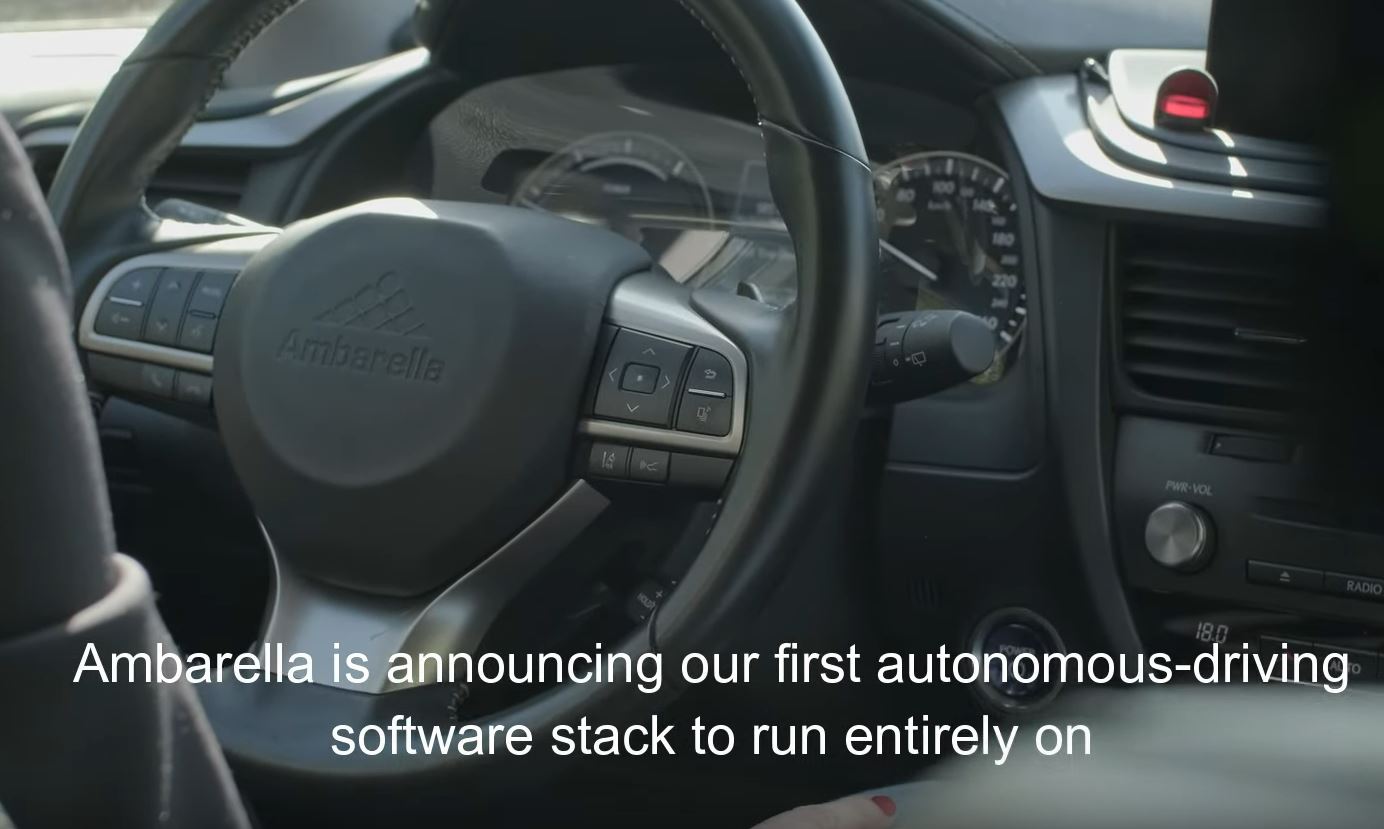Ambarella complements its ADAS chips with full software stack for autonomous driving
Date: 13/12/2023
Vision processing SOC chip expert Ambarella is offering a full software stack for autonomous and semi autonomous driving systems designed using its latest ADAS chips CV3-AD685 and CV3-AD. Ambarella has developed this software by using its deep learning based planner, which is being trained with data from wide variety of real-world scenarios, where company said it has invested many years in its evolving R&D vehicle fleet. The software stack covers all of its modular components such as environmental perception, sensor fusion and vehicle path planning.

The SOC chips and the software are designed in such a way that they optimally utilise the resources in terms of processing load and power consumption. The SOC chips also designed to provide optimal processing for vision and radar sensing and fusion.
The both software and hardware components are designed to provide natural driving experience. Another advantage of this hardware software co-system is, it uses readily available standard definition maps instead of pregenerated high-definition maps. This stack has the ability to generate HD maps in real-time by using live environmental data from the vehicles sensing system. This real-time HD map generation helps in handling difficult driving scenarios such as downtown areas in lot of cities with roundabouts, narrow roads with parked vehicles, huge traffic, and some road construction, and also high-density of pedestrians and cyclists. Ambarella has its own R&D vehicle fleet, where the latest vehicles are using sensing systems consisting of mono and stereo camera, and also Ambarella’s Oculii 4D imaging radar. Ambarella's CV3-AD does all of the processing of these sensor systems.
This stack also supports flexible implementation model allowing automotive OEMs to use any or all of its modules in combination with their own software IP.
Ambarella said its modular AD software and hardware solutions provide OEMs with a scalable platform that enables them to select the CV3-AD family member with the right mix of performance and features for each model in their fleets, opening the door for autonomous features in mass-market vehicles, including broad range of autonomous and semi-autonomous vehicle implementation starting from L2+ to higher.
Ambarella stresses on the key performance of a system such as delivering high AI performance per watt and simplifying thermal management, which helps in increasing the battery range for electric vehicles. Ambarella also says it's hardware has enough processing space available for integrating additional software to create differentiated features, including those for functional safety.
Ambarella also said it provides automotive OEMs with a complete tool chain both in house and from ecosystem partners. This includes tailored tools for data collection (in conjunction with the CV3-AD’s on-chip encoder), simulation and annotation. Development is streamlined via accelerated software in theloop (SIL) simulations using CV3-AD PCIe server cards, while Ambarella also provides a fully automated 3D annotation pipeline to support AI training.
Ambarella says its ASIL B(D)-compliant CV3-AD domain controller SoC deliver high AI performance per watt for neural network (NN) computation, with a performance increase of over 40x compared to Ambarella’s prior versions.
CV3-AD domain controller SoC has key features such as neural vector processor, general vector processor supporting autonomous driving for vehicles from L2+ to L4, single- and multi-camera ADAS, DMS and in-cabin solutions, single- and multi-channel electronic mirrors with BSD, and intelligent parking assistance systems.
Processing island targeted to meet ASIL B requirements; safety island targeted to meet ASIL D requirements
Ambarella to demonstrate this new stack powered system at CES in Las Vegas next year.
News Source: Ambarella


